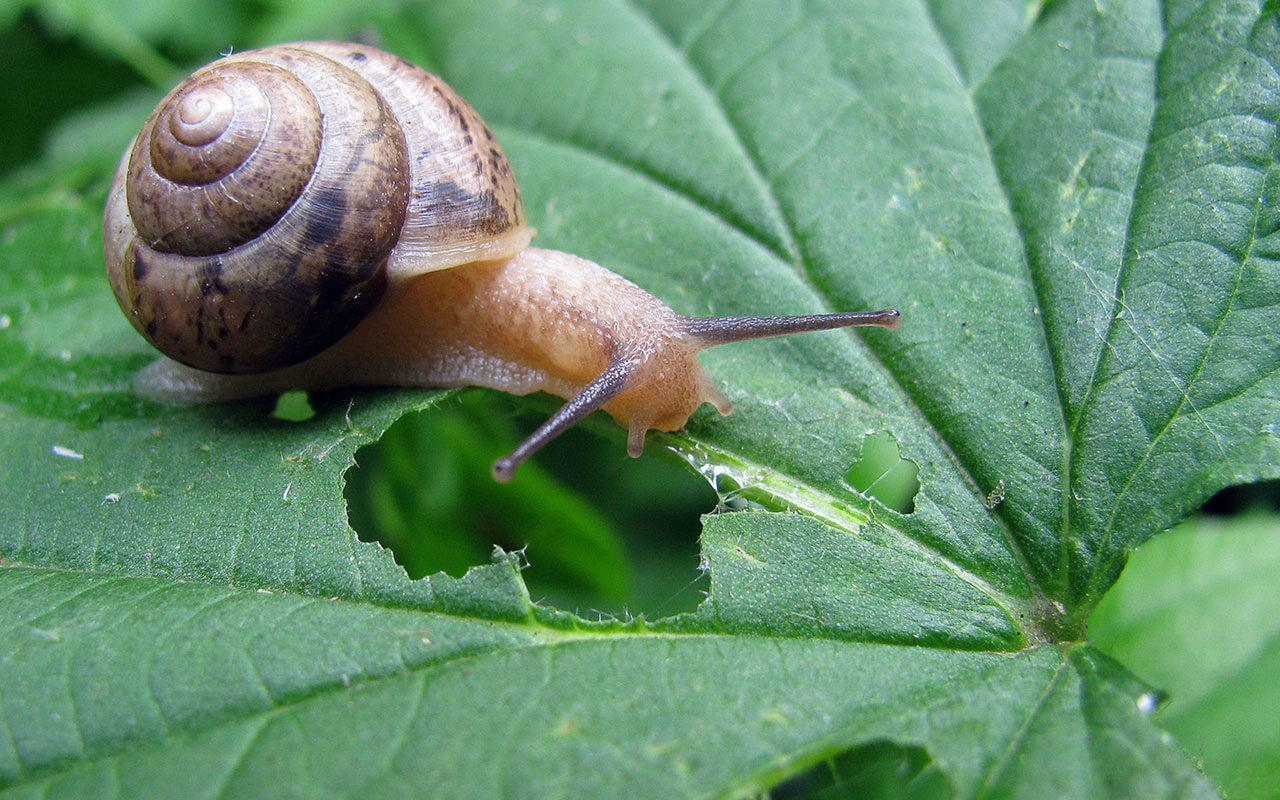
If slugs are rapidly breeding in your summer cottage or garden plot, restrictive or destructive measures must be taken urgently, otherwise there will be no chance to save the crop. You won’t be able to destroy all the slugs, since they easily migrate from neighboring sites and gardens. Many different methods have been developed for regulating the numbers of these mollusks; we suggest that you familiarize yourself with some of them.
Content
Causes of slugs in the garden
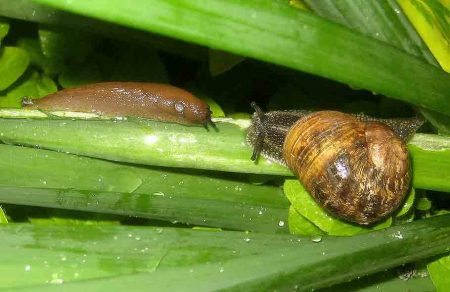
Under natural conditions, the development of slugs is limited by weather factors, diseases, and natural enemies.
They can get to the summer cottage in the following ways and for the following reasons:
- together with seedlings of cultivated plants;
- untreated soil;
- a lot of fallen leaves on the site.
Slugs before the onset of winter are laying eggs. You should always remember this and take certain actions if you do not want to increase their population by spring.
Signs of slugs
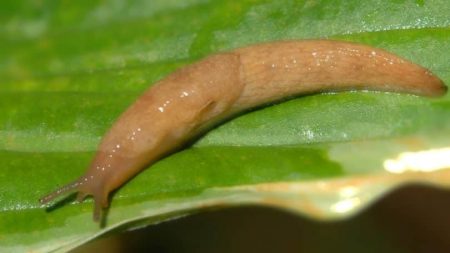
The slug is a close relative of the snail, but unlike it, it does not have a shell. This is a fairly common pest of vegetables and fruits in Russia. The mollusk moves on the surface of the earth in a way of muscle contraction. You can understand that he has become your unwanted neighbor by seeing the eaten leaves of vegetable plants, holes in tubers, fruits and root crops.
The body of the pest is covered on all sides with liquid mucus, so after moving it on the ground there remains a shiny path. On the head of the mollusk there are tentacles similar to horns, eyes are also located there. The slug's appetite is very good. With its mouth, which has the shape of a sickle, as well as a tongue in which there are many small cloves, the mollusk scrapes food from any surface.
The slug is multivorous, and feeds on almost all garden crops, including such as:
- Tomatoes
- green crops;
- cabbage;
- cucumbers
- any berries;
- flower plants.
The rapid multiplication of slugs contributes to high humidity and not very high air temperature.
In years characterized by drought, the number of slugs drops significantly. Mollusks produce little offspring, eat less, which means they do little harm to cultivated plants. In unfavorable periods of time, the slugs turn into a cocoon and in this state they wait for the weather to come.
In rainy periods, mollusks are especially active. Moving around the site, slugs are able to transfer pathogens from diseased plants to healthy specimens.
Harm from slugs
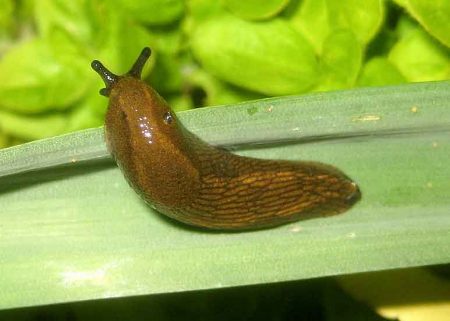
These are very serious plant parasites. In the daytime, while it’s hot and dry, they sit in the secret places of the site, where it’s cool and humid enough. And at night, waiting for the appearance of dew, or during periods of rainfall, slugs get out onto garden plantations and begin to eat leaves of cultivated plants and a ripening crop.
Most often, slugs prefer to eat on fruit, vegetable and ornamental crops, affecting the entire vegetative part in them.
A plant that is left without leaves loses its ability to photosynthesize, fruits cannot be tied without eaten flowers, and fruits eaten by mollusks and stained with mucus lose their quality.
Fighting slugs in the garden
Most amateur gardeners try to fight these pests without using chemicals. There are a lot of such methods.
Folk methods
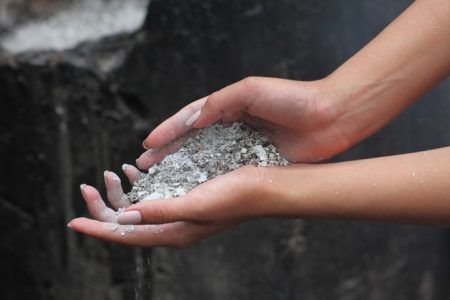
Home control methods have been tested in practice, they are distinguished by excellent efficiency and are absolutely not harmful to warm-blooded creatures and plant organisms. Many of these products do not even harm the mollusks, they just scare them away from the plantings.
It is advisable to practice home remedies in conjunction with preventive measures, such as:
- loosening the soil;
- weeding,
- thinning,
- harvesting weeds and plant debris from the site.
Fighting these mollusks on garden beds with folk remedies will certainly lead to the expulsion of these parasites.
Mechanical methods
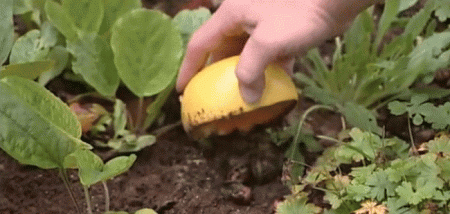
The point is to establish various barriers to the migration of mollusks. What kind of obstacles can be:
- Special gutters made of plastic, which are fixed along the border of the beds. Such gutters are filled with water, which becomes an impenetrable barrier to these parasites.
- Dry bulk solids (gravel, crushed snail shells or crushed egg shells) are disgusting for these parasites, so they are used to fill row spacings.
- Special ecological substance. It has a similar principle to the previous version. A material called Slug Stoppa Granules is placed between plants, and it acts during the summer. Granules absorb moisture and mucus, dry the surface of the mollusks, as a result of which they lose their ability to move.
- Plastic headbands. They have a bent edge, due to which they are fixed in the soil near the plants and prevent parasites from approaching them.
- Special traps. This is an ordinary bowl, protected from above by an umbrella. The trap is set so that the entrance to it is at the level of the soil. The bowl is filled with beer or natural juice. A pleasant smell attracts slugs to it, and an umbrella does not allow rain drops and debris to get into the bowl.
- Planting vegetables on elevated ridges, timely tying them to trellises. This will also help reduce damage from the impact of the pest.
With the onset of dusk or immediately after precipitation, slugs are easy to assemble with your hands, and then feed them domestic chickens.
Electric way
In specialized stores sell self-adhesive copper tape brand Shocka. When mollusks come in contact with this device, they receive a small discharge of electric current, from which they fall into a state of shock. Next time they will not want to crawl in the same places.
The use of chemicals

In exceptional cases, chemicals are used. Trade organizations offer granules "Thunderstorm" and "Meta". They well attract and destroy slugs in the garden. The disadvantage of the means is that it is very poisonous. If any drug enters the human digestive tract or respiratory system, serious health problems occur.
A sufficient effect is obtained in the fight against these parasites when plants and soil are treated with a 1% solution of iron sulfate. Compared to previous drugs, this remedy is not so toxic.
The use of biological agents
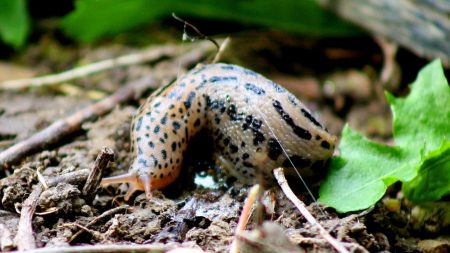
Microscopic parasites of slugs, which are successfully used against these mollusks, live in nature. It is enough to buy the nematode Phasmarhabditis hermaphrodit (Nemaslug trademark), which, parasitizing on slugs, brings them to death.
The use of this biological product is possible in the warm season, when the temperature of the soil composition exceeds 5 degrees.The tool shows excellent effectiveness with increased humidity of air and soil.
The use of this method of exposure to slugs has a number of tangible advantages:
- duration of action;
- high performance;
- safety for people and plants;
- ease of use.
The tool with microorganisms needs to be diluted with water, and then water the plants that have been attacked by slugs. After 6-8 days, the parasites die. One treatment is usually enough for 45 days. After this time, the processing can be duplicated.
The disadvantages of this tool are the following:
- the drug remains valid for 1 month;
- Store the product before use in the refrigerator.
Natural enemies
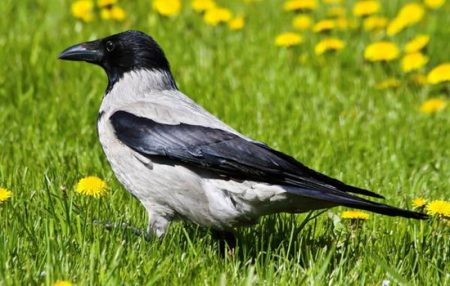
Natural enemies of these mollusks also help to fight slugs. They are eaten with great pleasure:
- jackdaws;
- hedgehogs;
- crows;
- frogs;
- starlings;
- poultry.
These representatives of birds can significantly reduce the population of slugs on the site.
Plants
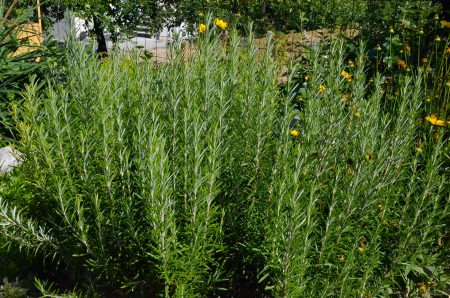
Plants grow in nature that cannot tolerate slugs and try to stay away from them. The most common of these are the following representatives of the flora:
- rosemary;
- garlic;
- laurel;
- lavender;
- sage;
- thyme;
- mustard.
If you grow them along the border of the beds, you can save the crop.
From onions, garlic or mustard, you can prepare infusions and spray them with berry and vegetable crops. This will scare away the pest.
Make a small pond on your site, leave a small piece of land uncultivated, hang birdhouses. Then you will have frogs, starlings, hedgehogs who will take on the problem of controlling the number of slugs.
Destroying such an insidious enemy as a slug is not easy. To do this, you need to apply an integrated approach, using all sorts of options and tools.
How to deal with slugs on cabbage
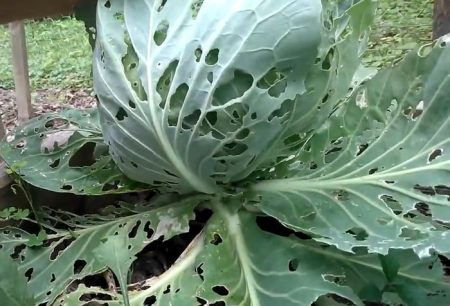
The most preferred culture for slugs is cabbage, it is precisely to it that it is capable of causing the greatest harm. Tender and juicy cabbage leaves are a real treat for the mollusk and it can completely destroy the crop.
The use of chemical preparations against the pest is highly undesirable. Preference should be given to one of the folk remedies. The following are the methods and tools resorted to by gardeners with experience to destroy slugs.
Spraying
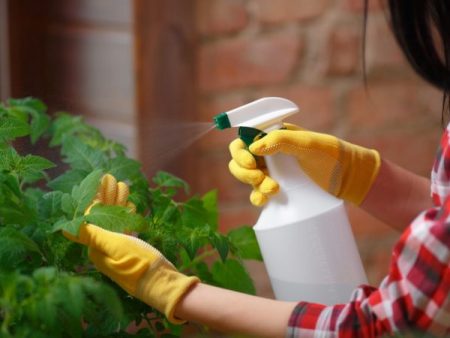
It is advised to spray cabbage against slugs with such compounds:
- Hot water. Cabbage can easily withstand water at 55 degrees without negative consequences, and slugs begin to die from exposure to water having a heating temperature of 40 degrees. This method is based on this temperature difference. If mollusks are visible on the leaves, you need to heat the water to 45 degrees and spray. The slugs that receive a hot shower and die from it should then be selected manually from the leaves.
- Instant coffee. This product is an excellent tool for the extermination of slugs. After contact with caffeine, adult specimens become inactive, and young parasites die. To perform spraying, it is necessary to dissolve 2 servings of coffee powder in 200 ml of water, and then process the cabbage. Feeling the smell of coffee, the slugs begin to retreat.
- Salt solution. Sometimes you can use a weak solution of salt familiar to us. For this, 100 g of crystals are diluted in 10 l of water.
- Infusions of individual herbs. Do not tolerate these gluttonous pests and odors of individual herbs, such as:
- marigold;
- all types of wormwood;
- tobacco;
- walnut leaves.
Trap
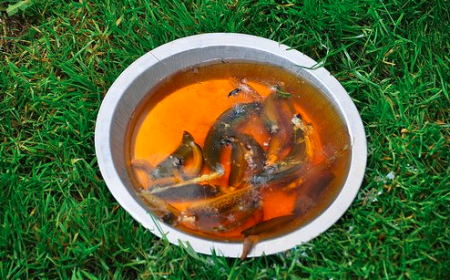
In the afternoon, parasites take refuge from the heat and the sun unbearable for them in thickets of grass or climbing under stones. For their capture, you can make traps yourself. For this, such materials are suitable:
- lumber trimming;
- slate debris;
- rough fabric;
- only;
- another trash.
Having chosen a free place, it is necessary to moisten it with plenty of water and put the prepared material. The fabric is pre-wetted with water.After a couple of days, the slugs will be under the materials. They need to be collected and fed to chickens, and the device should be left to continue catching parasites.
An interesting trap will come out of a plastic bottle. It is crushed from the sides, an attractive liquid is poured into it:
- honey;
- juice;
- beer.
Then the bottle is laid flat between cabbage plants. From above it is pressed down with a stone to fix it. Having smelled, the slugs will climb into the tank, and they will no longer be able to get out of it. Traps should be inspected daily and fluid added.
Lures
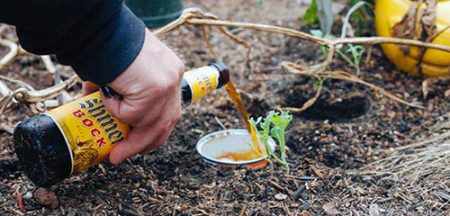
Another opportunity to kill slugs is to place the bait in the garden. For their device apply peel from grapefruit or watermelon shell. For this purpose they are prepared as follows:
- cut the fetus in half;
- extract flesh from it;
- make a hole in the middle of the peel.
These cups of fruits in the evening are distributed over the beds of vegetables with a slice down. Feeling the aroma of the fruit, the slugs gather under these shells of the fruit and sit there. It is enough in the morning to go to the locations of the baits and destroy the parasites.
Fighting folk remedies
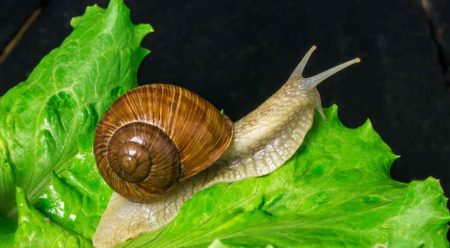
As we noted earlier, in the confrontation with these mollusks, home remedies turned out to be the most effective. After them, the residual amount of pesticides does not remain in vegetable products. In addition, they are very affordable and are always at hand. Below are the most effective home remedies.
- Wood ash. Summer residents with experience will widely use ash to fill the deficiency of plant nutrients and to expel various pests. If you sprinkle ash between the rows, the slugs will be kept at a respectful distance from the vegetable beds. The fact is that this material adheres to the slippery body of the parasite and does not allow it to move normally. Such protective actions must be performed in the evening, where there are migration routes of the pest. To increase the effectiveness, the same dose of tobacco dust or lime should be mixed into the ash.
- Salt. Edible salt is also an excellent weapon against all types of slugs. If you use this product on vegetable plants and flower beds, this can lead to salinization of the soil. But on composters, where slugs are often localized, salt can be used without any fear. If the paths of the slug left on the heap of compost are sprinkled abundantly with salt, this will lead to the rapid expulsion of this gluttonous pest. In order to avoid the dissolution of salt crystals, this method should be applied after sunset and in the absence of precipitation.
- Soda. Sodium bicarbonate or regular baking soda is often used by vegetable growers against slugs. Instead of baking soda, you can just as well use soda ash.
- Vinegar. Acetic acid is often practiced by vegetable growers in the fight against these parasitic creatures. To create a working composition, you need 10 liters of water and 65 ml of 9% vinegar. The resulting solution perform spraying of the leaves and apply it to those places where pests have accumulated. The number of such treatments should be limited, since it is harmful to representatives of the flora.
- Mustard. Mustard powder can not harm plant organisms, and mollusks from it will certainly die. Therefore, this plant substance is widely used against slugs.
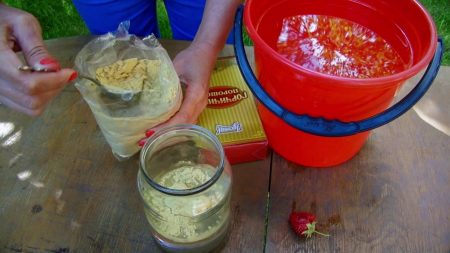
- Ammonia. Experienced gardeners often resort to this tool, because it is very effective. However, when processing with ammonia, it is impossible for the liquid to fall on the plant, due to possible burns to the leaves. For use, it is necessary to dissolve 1 liter of ammonia in 25% concentration in 9 liters of water and pour cracks on the soil surface with this liquid composition, where mollusks can live. For a continuous strait of soil, the dose of ammonia is doubled.
- Beer. The smell of this low-alcohol drink greatly attracts mollusks.To catch them, in places of localization of pests, they dig a glass jar into the soil so that its edge is 2 cm above the ground level. The container is filled with beer by 2/3, and a protective umbrella is arranged on top. Slugs will become interested in beer, fall into a can and will not get out of there. The gardener will only have to check the bank and kill pests every 3 days. After that, fresh beer is poured into the can and the parasites continue to be caught.
- Needles. It has been established that the needles of conifers do not allow mollusks to move normally, their delicate bodies are gouged, and they don’t like the smell of needles. Therefore, this accessible material has gained such popularity. It is enough to scatter coniferous needles on the beds of plants and the problem will be solved.
- Barriers. It is possible to reduce the damage from the attack of these parasitic creatures if barriers of coarse sand, crushed egg shells, coffee grounds or screenings are built on their way. One of these materials is poured around vegetable ridges, shrubs, along the borders of the plot with small ridges. Copper sulfate can be added to the mixture of these materials, from which the parasites will die even faster.
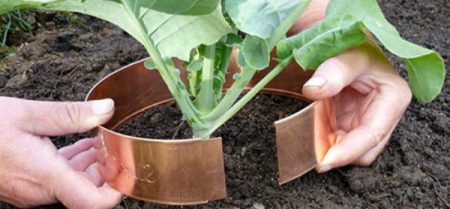
There are two uses for soda:
- processing the accumulation of slugs with soda powder;
- spraying the leaves of plants with a composition consisting of 9 l of water, 40 g of soda ash and 20 g of soap.
Mustard has 2 uses:
- the use of dry powder;
- spraying with mustard infusion (150 g of mustard, 10 l of water and infusion for 2 hours).
The best remedy for slugs
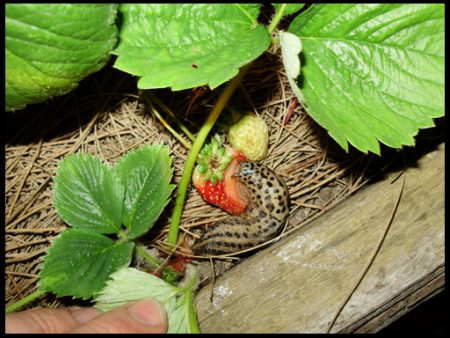
There is a very primitive way of confronting slugs that does not involve complex actions and it is perhaps the best. For this, the usual polyethylene film is used. You can use bags of any thickness, pieces of polyethylene remaining after disassembling the greenhouse, and even a black film.
Slugs love smooth surfaces because they are easier to move around. And for the next night, they would rather prefer a slippery package rather than a rough sheet.
In this regard, proceed as follows:
- Immediately after planting, for the night period in the aisles, lay pieces of film, pressing them slightly with boards, so as not to be carried away by the wind.
- In the morning, the films are collected and rinsed in a basin of water. All gathered under the slug film, end up in the pelvis. Performing such actions daily, after a couple of months you will generally get rid of them.
If you do not have time for daily struggle with these gluttonous creatures, then from the spring, lay the film in the rows of vegetable crops. Each time, coming to the country, you will collect slugs. Some of them will have time to die from the exorbitant temperature that has arisen under the film.
From eggs laid by the female slug, new offspring are born in May. An individual becomes sexually mature at the age of 45 days. Over the summer, each adult female can lay eggs up to 5 times and produce new young slugs.
Prevention
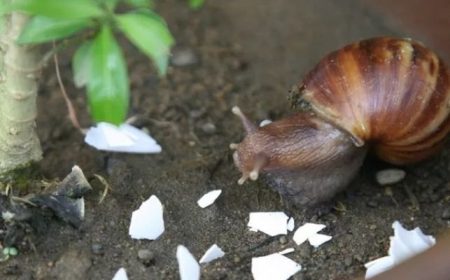
To prevent the mass spread of slugs in your area, you need to perform a number of preventive measures:
- The garden must be regularly dug up, grass cut around it, and weeds and tops removed.
- Thinning plants is also considered good preventive work aimed at regulating the number of the parasite. These creatures do not tolerate open and dry places.
- After completing the harvesting of vegetables, you should try to clear the soil of decaying and dry leaves, under which slugs like to gather.
There are plants whose smell causes rejection in slugs and, thanks to these representatives of the flora, you can save the crop:
- parsley;
- mint;
- chicory;
- garlic;
- lavender;
- mustard.
The listed plants are placed along the border of the garden plot, as well as between the ridges.
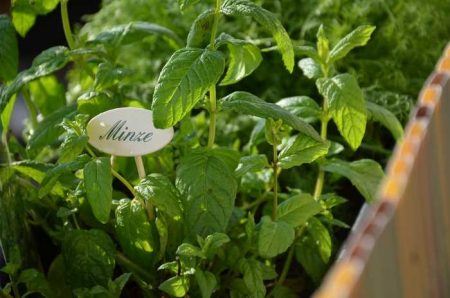
But best control the number of slugs:
- birds;
- hedgehogs;
- frogs.
They are pretty easy to attract.For birds, birdhouses and feeders should be fixed on the trees. Frogs will appear themselves if you equip a small pond with flowering leaves on the shore at the cottage. Hedgehogs also will not leave your site for a long time if you begin to feed them periodically with cookies and milk. If you manage to attract these living creatures to the dacha - the problem with slugs will be solved.
To limit the number of slugs in the garden can be quite productive, turning to folk methods. And if you combine the use of home remedies with the recommended preventive measures, then in the shortest possible time you will be able to clean the garden of slugs and grow a quality crop. It is also very important not to wait until the slugs multiply and eat all your vegetables, and immediately, if there are signs of the presence of these pests in the garden, enter into a fight with them.

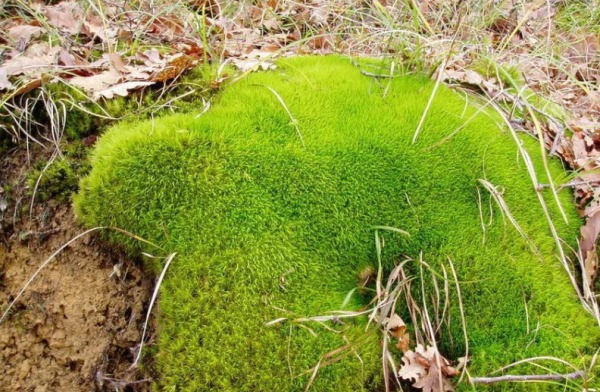 Where does moss come from in the garden and is it necessary to get rid of it?
Where does moss come from in the garden and is it necessary to get rid of it?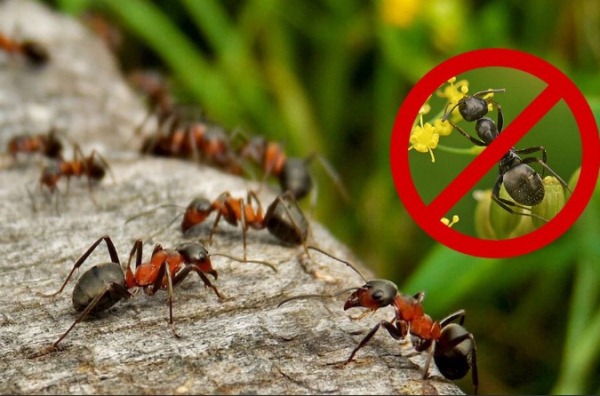 The most effective ways to deal with ants in the area
The most effective ways to deal with ants in the area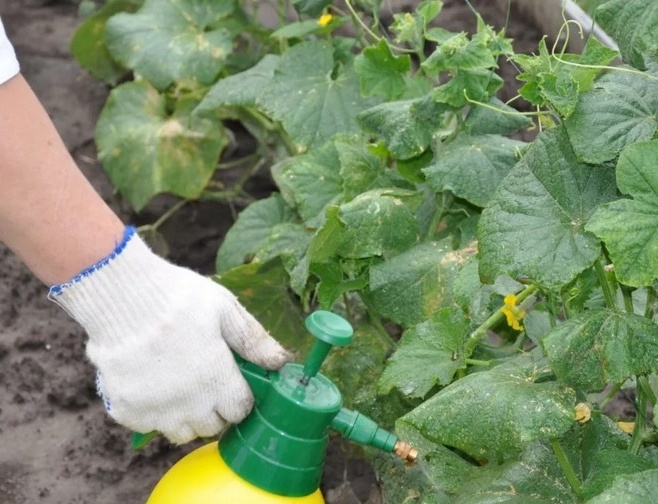 Cockchafer and Bear: An Easy Way to Save Plant Roots
Cockchafer and Bear: An Easy Way to Save Plant Roots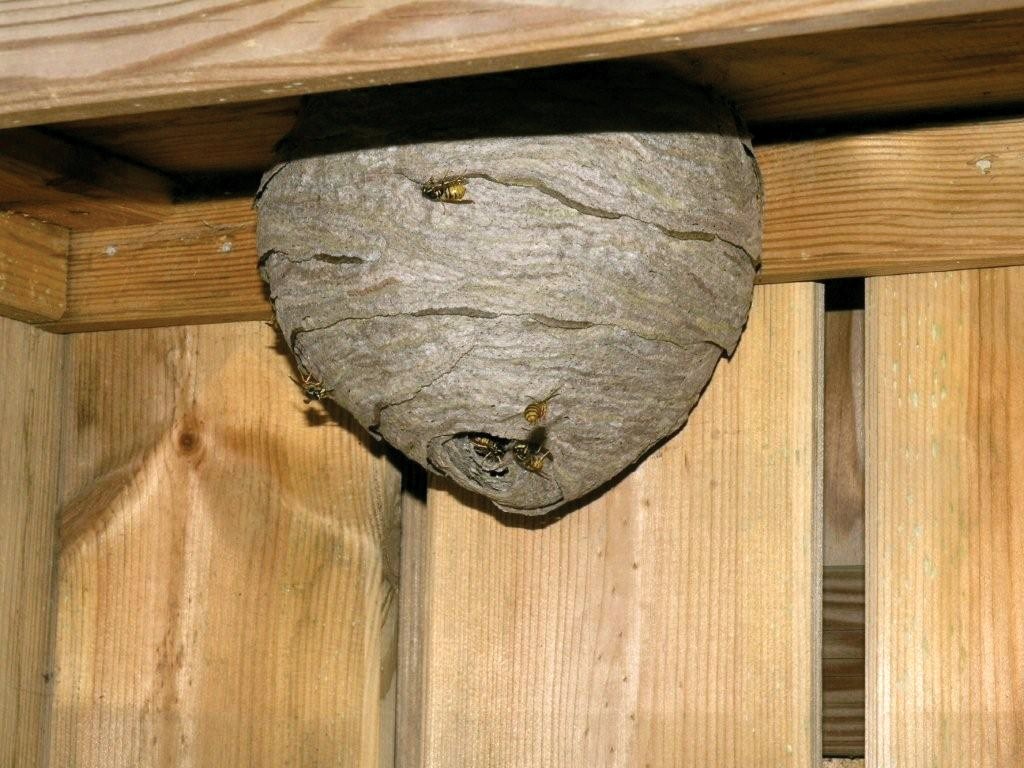 Get rid of the aspen nest quickly and safely.
Get rid of the aspen nest quickly and safely.